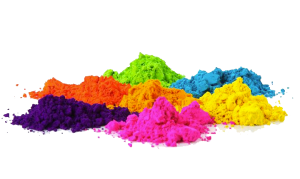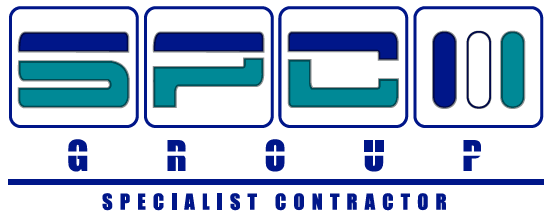Solent Protective Coatings Limited are delighted to offer our full range of powder coating services.
Our new powder coating facility offers flexibility and versatility to suit any application.
Powder coating types
Zinc-rich: concept of belonging to epoxy zinc paint, it represents that mzc (metallic zinc content) level is above certain level
Inorganic zinc: Inorganic zinc coating is compatible with epoxies, phenolics, acrylics, silicones, and many other coatings.
Inorganic Zinc coating when applied to blasted steel provides excellent corrosion protection, weathering protection, and very good resistance to salt water and solvents.
Zinc rich primers are used to protect steel surfaces from corrosion. Unlike regular paints or epoxies which resist corrosion by forming an impermeable barrier between the metal and atmospheric moisture, zinc rich primers provide corrosion protection by electrical means. The zinc and the steel for a tiny electrical – cathodic cell that protects the steel at the expense of the zinc. The zinc primer also provides a little ‘barrier’ protection as well.
Some types of zinc rich primers are used as a stand alone coating, but often they are topcoated with paint or epoxy (many industrial coating specifications call for a zinc primer, epoxy intermediate coat and a urethane topcoat). A zinc primer under a topcoat of epoxy or urethane paint provides a backup or secondary method of protecting the steel from corrosion.
Epoxies were the first widely used powders. They are very durable, offer excellent hardness and have arguably the best chemical and corrosion resistance of all available powders. Another plus of this type of powder is its ease of use and a wide range of cure schedules. Epoxies adhere to metals extremely well, with various pretreatments of the metal providing excellent adhesion, including phosphate coating and sandblasting.
The drawback of epoxy powders is that they do not weather well. Exterior exposure can cause them to fade and chalk in the sun. They weather poorly and will often start to degrade on the surface after a few months. This makes epoxies better suited to indoor applications.
A final note on epoxies is that many primers are epoxies due to their adhesion strength and corrosion resistance. Since they do not handle the sun well, their use as a pre-coat underneath another paint type utilizes their strengths while covering their weaknesses.
Polyesters are the most commonly used powders and offer great value for money. The two most widely used types of polyester powder: TGIC (tri glycidyl isocyanurate) and non-TGIC, which is also known as TGIC-free or sometimes a ‘Primid’. Both TGIC and TGIC-free polyesters offer good mechanical resistance, including great flexibility and impact resistance, and good chemical resistance. One draw of this powder is its low cure temperature. This low-temperature requirement makes it better for sensitive items. Polyesters will also provide good overbake resistance to yellowing, which makes them really easy to use and Standard Polyesters will offer 1-3 years of good UV resistance, so they work well for all interior and some exterior applications. A huge advantage of standard polyesters is the enormous choice of colors, gloss levels and special effects they’re available in. It’s almost limitless! Polyesters have solid all around properties and are a common first choice for many applications.
It seems kind of obvious, but TGIC-free polyesters offer all the advantages of TGIC polyesters, without the TGIC! They can also give a higher first pass transfer efficiency, but are more sensitive to excess film thickness and provide less overbake resistance than TGICs.
As the workhorse of powder coatings, it’s not surprising that there aren’t that many drawbacks to polyesters. If you’re coating pieces that will be permanently outside and therefore need good wearability and durability, then consider the super durable polyester instead. Limited exterior durability is a standard polyester’s main disadvantage.
Epoxies and polyesters are often mixed together to form hybrids. These hybrids remain closely related to pure epoxies but offer superior weather degradation properties. These hybrids can be mixed in various ratios to emphasise the characteristics of either the epoxy or polyester. The polyester will enhance the over-bake resistance when compared with a straight epoxy and they also create ultra-smooth, thin films. The combination of the resins can also make them more economical than a pure epoxy. The polyester does reduce the corrosion and chemical resistance of the epoxies and doesn’t really add any outdoor weather-ability to the product. Hybrids are widely used on items that require good cosmetic appeal along with good functional properties. Hybrids can be used in some of the same areas that epoxies are used, but are typically found on indoor appliances and other household items like furniture, shelving, interior lighting, and power tools. Domestic appliances like stoves, washers, and dryers are a common application for hybrids.
Fluoropolymers are typically used in architectural markets due to their phenomenal weathering properties and world-class color and gloss retention. Their corrosion resistance and excellent weatherability make them extremely popular for exterior architectural applications like curtain wall, windows, doors and more. The two most common types of Fluoropolymers found in powder coatings are FEVE and PVDF. PVDF Fluoropolymers always need a primer beneath them – whether liquid or powder and are much more difficult to bond when creating metallic powders. FEVE resins are the most popular within the powder community for their superior one coat capability and incredible exterior performance. FEVE based Fluoropolymer metallics can also be bonded so that when applied, the metallic flake is more evenly distributed throughout the powder for a more consistent appearance. Fluoropolymer powders are usually only available to members of a Certified Applicator program, as up to 20-year warranties are available on these products when applied by a certified applicator to architectural aluminum. One popular brand of fluoropolymer is IFS 500FP, which is a high performance, FEVE based Fluoropolymer and adds better abrasion resistance to the standard fluoropolymer characteristics.
Although initially more expensive than polyester coatings, Nylon has superior wear, abrasion, and impact resistance. Any extra cost is recovered many times over by savings in maintenance and replacement costs. Coating with Nylon is a major part of our day to day business. We are an approved applicator of Rilsan, and have built up a considerable expertise with this product.
Key benefits of Nylon are:
- Non toxic
- Excellent wear characteristics
- Good chemical resistance especially to solvents
- Good corrosion resistance
- Good thermal insulation, ideal for warm to touch applications
- Flexibility at low temperatures
- Smooth low friction surface
- Certified colour formulations for all standard colours in our spectrophotometer or we can match accurately to any colour sample. RAL, BS, Pantone, RDS and Munsell charts available

